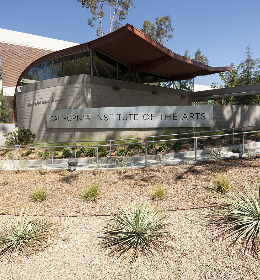As the main venue for contemporary art in Debrecen, Hungary's second largest city, MODEM has the potential to reach a broad range of people with this exhibition, which covers a topic we can all relate to: family and the interrelations within it, both good and bad.
Recently, I traveled to Debrecen to visit the exhibition and spoke with the curator about its context and the development of this impressive move to connect with the many aspects of family in Hungarian society represented at the art centre. The title, 'For Family Reasons', comes from a phrase used in Hungarian children’s school reports: “I certify for family reasons that my child…”. This phrase marks a crossover to many cultures as a common excuse one uses for children who miss school, as well as marking a social boundary that one does not dare to cross with inquiry for fear of offending or making someone on the other side of the family circle's barrier uncomfortable.
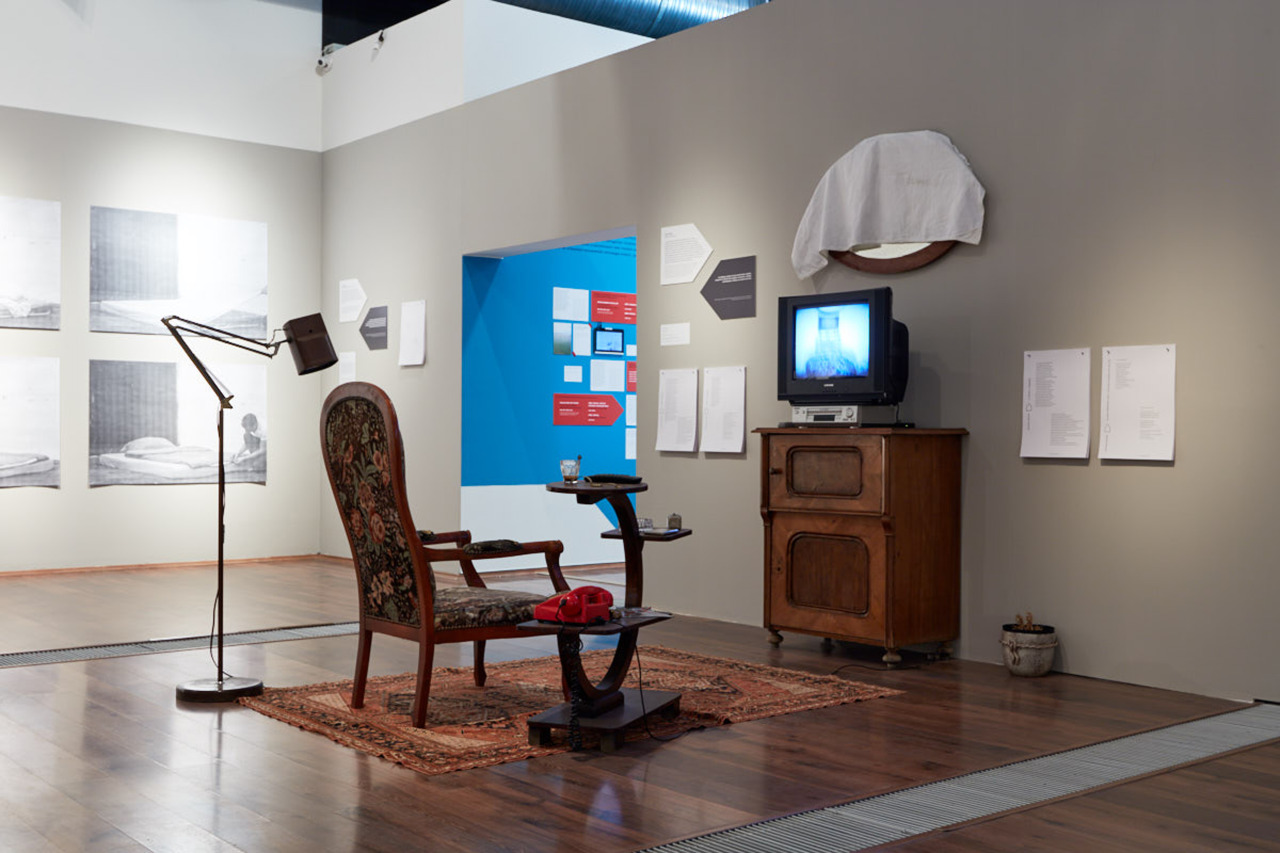
Exhibition view, photo credit: Biro Dávid
“In Hungary, the habits of visiting contemporary art institutions are very different than in Western Europe. Here, a lot of people are afraid of contemporary art because they think it is something incomprehensible and that only a very small snobbish group can understand it. I thought that it was very important to pick a topic which is familiar to everybody because everybody has an experience or a story which is connected to their family,” explains Don.
On entering the exhibition, there is a circle of chairs immediately conveying family, both through its arrangement evoking a family gathering and through the styles of chair one associates with different stages of life, from a baby’s chair to a rocking chair. This circle immerses the visitor into a familiar context, for they have seen chairs like these in their own home and in that of their extended family. The first section tackles the history of the family in Hungary, dating back to the 19th century, and includes the taboo topic of domestic violence, which is often hidden behind a wall of silence. Here the wall is literally under construction, as you pass from one room to the next, an unpainted wall with cutout windows and lace curtains creates a juxtaposition with its reciprocally facing wall with a series of quotes and explanations about domestic abuse. The effect is as if you were walking through a child’s dollhouse, filled with these quotes and clarifications about what abuse is. And, at the end of this little hallway, there is a shelf holding brochures with contact information to get help from NANE (Women’s Rights Association).
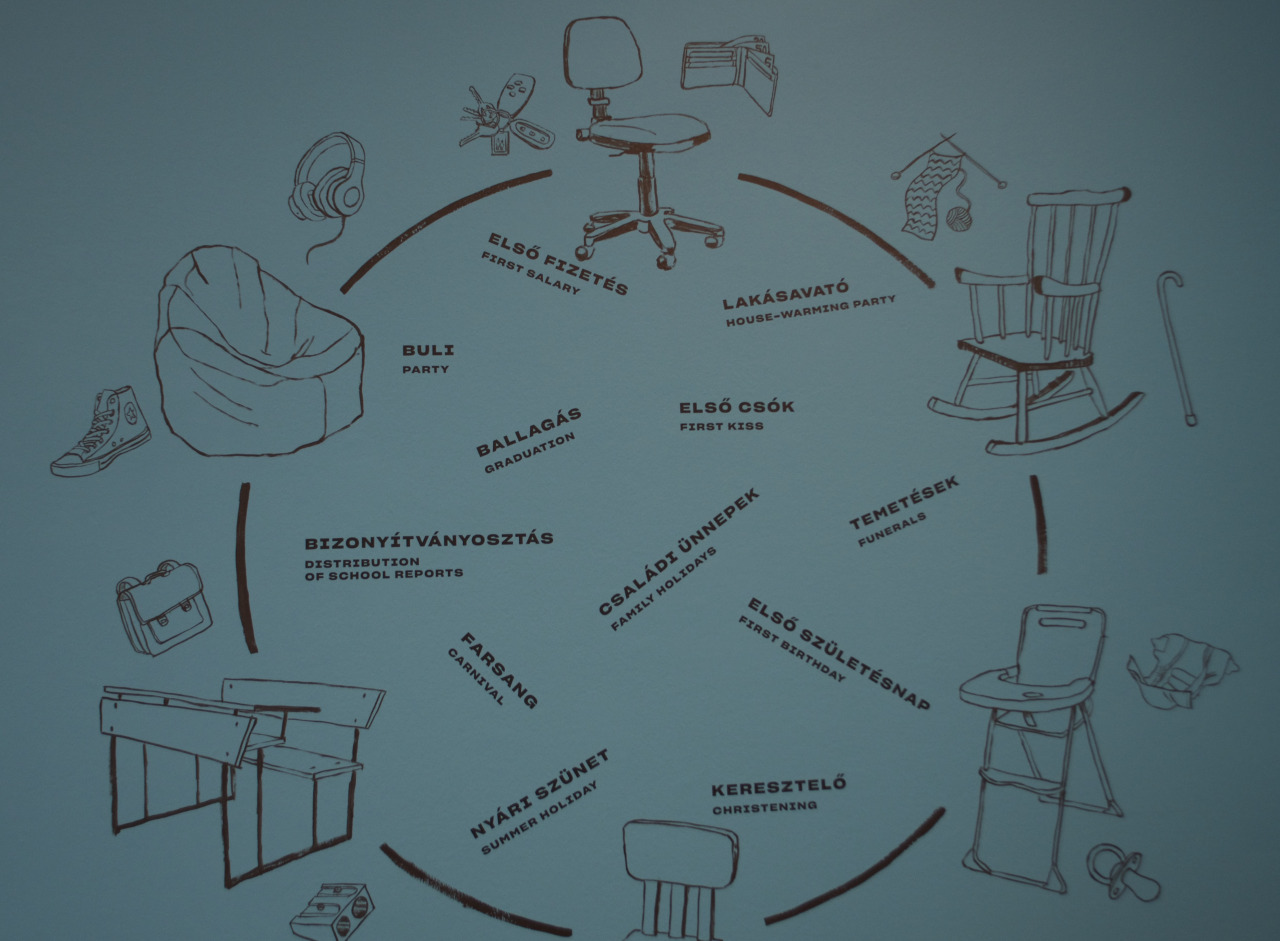
Don reveals the curatorial process, explaining, “It was necessary for me to show a social and psychological context about the family, not just the artwork that dealt with it. As a result, in the first room a visitor could see the family as a subject from the perspective of psychological and social aspects. I worked with psychologist Anett Ragó and sociologist Zsolt K.Horváth for half a year to figure out how we could represent these perspectives. One of the most important parts of the exhibition focused on domestic violence, which is a very sensitive topic. I was thinking for months about how I could exhibit the response to this subject. Finally, I asked Csönge Balla, who studied sociology and art, to create this part of the exhibition. First of all, we asked to collaborate with Child Welfare from Debrecen and NANE, an NGO, as it was very important for us to work with people and institutions who have been declared experts in domestic violence.”

Exhibition detail, photo credit: Anne Murray
The display is impressive as it accepts with forthright admission that if one is going to address the topic of family, domestic violence is an important element that has so often been overlooked. The quotations and texts cover the cycle of abuse from verbal, physical, and sexual to neglect, clarifying that abuse takes many forms and goes far beyond physical violence into the realm of the psychological, with financial and social violence playing their overlapping roles in this trauma.
The next room includes works related to poems, and visitors are invited to take their own copies home of the works by various Hungarian authors with the text in both Hungarian and English translations. Don chose the artists through his knowledge of those already working in relation to the theme of family. He brings transparency to this curatorial process by saying, “You know the Hungarian art scene is not too big. Therefore, a curator already knows the artists who deal with social or private stories, which are linked to the family in some way. 'For Family Reasons' has four parts, and in the second section I made a full list of Hungarian contemporary poems focused on family. It was important for me to not just have visual artists, but musicians and a filmmaker too. I invited six artists to select one of these poems and to make an artwork which is connected to the poem in some way; this was essential, because when I started to think about the exhibition, I was inspired by literature. I wanted the artists in this section to create new artworks which were not illustrations of the poems, but separate art pieces inspired by them.”

Exhibition curator, Tamás Don, photo credit: Biro Dávid
Expanding across an entire wall and part of the floor, Péter Puklus’ work, How to Make a Bed, is so completely relational in its storytelling and impact. A mattress with a grey fitted sheet, pillow and comforter, which appears as if someone had just gotten out of it, is arranged in close proximity to a wall covered with a series of large black and white photographs of a man placing sheets on the bed. The description on the wall explains that this is a chore traditionally done by women, and the surprise is to see a man taking on this job. This work emphasizes the marriage bed as a meeting place where the couple gets to know one another. One of the wall texts explains that, today, 50% of marriages in Hungary end in divorce.
A brief poem by Turi Tímea Családi Kűr (Family Freestyle) and translated by Kiss-Süli Fruzsina serves as inspiration:
Men are not even at home
when they are. Women
are still at home when they are not.
They never fall in love at home.
Mum and dad, embracing each other,
pretend not to see one another.
'For Family Reasons' also includes works by locals: “In the very last section we created a workshop with Péter Szabó-Pettendi who is a wonderful artist, in order to deal with local people’s family stories and memories. It was going for six months and we met monthly for five hours and each participant brought some photos and stories about his or her own family. Peter led the workshops. He showed artworks and movies on the subject and he helped everyone figure out how to exhibit their ideas and visions.”
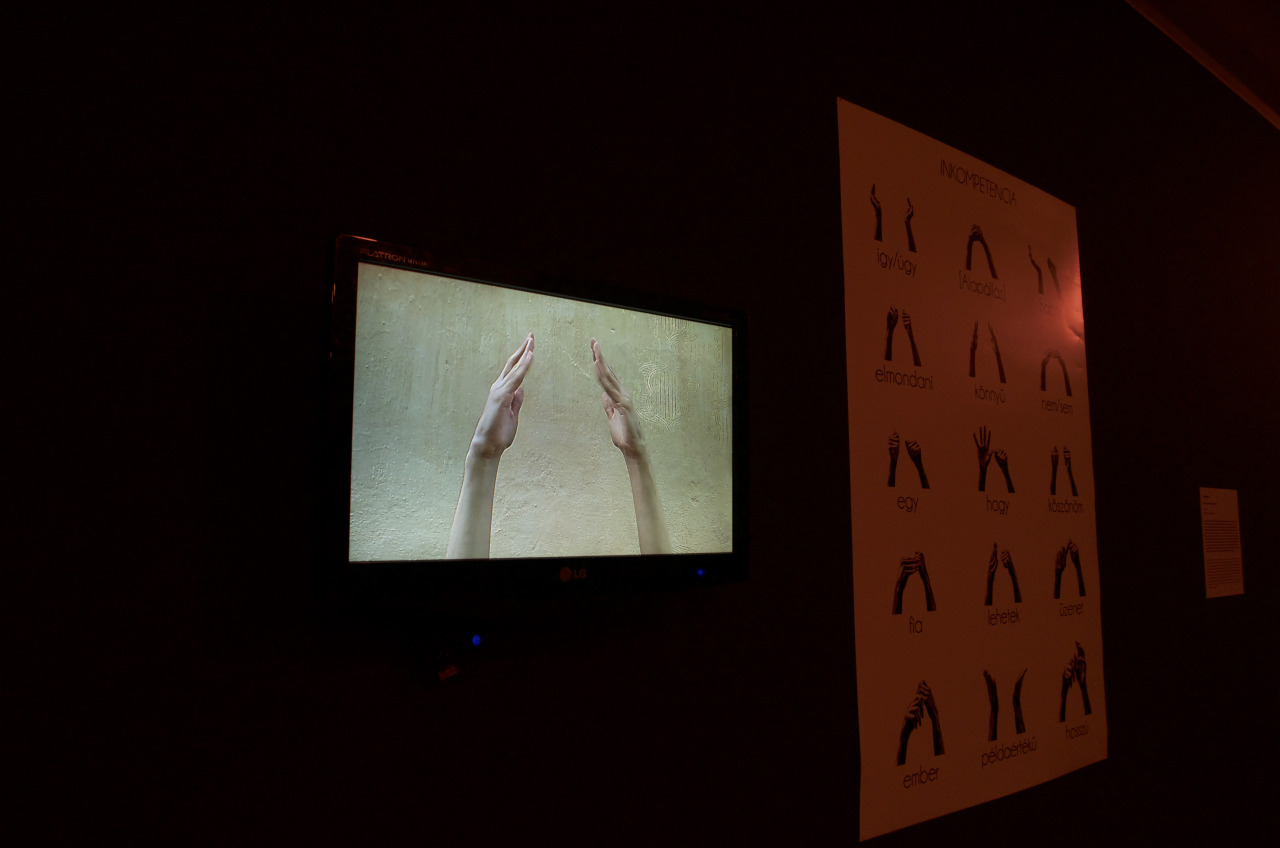
Incompetence by Éliás Tamás, 2019, video and graphic, photo credit: Anne Murray
Incompetence, a video and graphic work by Tamás Éliás (who participated in the workshop), addresses stereotypes of communication. In the wall text, the artist explains that men are often associated with having difficulty expressing their emotions, but asks the question as to whether or not the home environment plays a role in this expression and the comfort level which is necessary to develop this skill. In the video, Éliás decodes the gesticulations of his father and stepfather. On the wall beside the video, Éliás has placed a chart sharing the meaning behind each gesture.
The overall exhibition examines a variety of concepts related to memory and post-memory as well as object memory, which are particularly relevant when considered in relation to family and objects passed down from one relative to another through generations, even addressing the burden of a family name that has significant cultural context. Upon asking what Don expected from the exhibition he replied frankly, “Unfortunately, I am a realistic man and I don’t expect anything. Of course a few hundred, maybe a thousand people will see the exhibition and I hope deeply, from the bottom of my heart, they will love it. If my concept works, they will think about it, perhaps they will tell their friends. This is very good. Perhaps some critics will write about the exhibition and a few years from now, if somebody will remember some artworks or some part of this exhibition, it will have been worth it.”
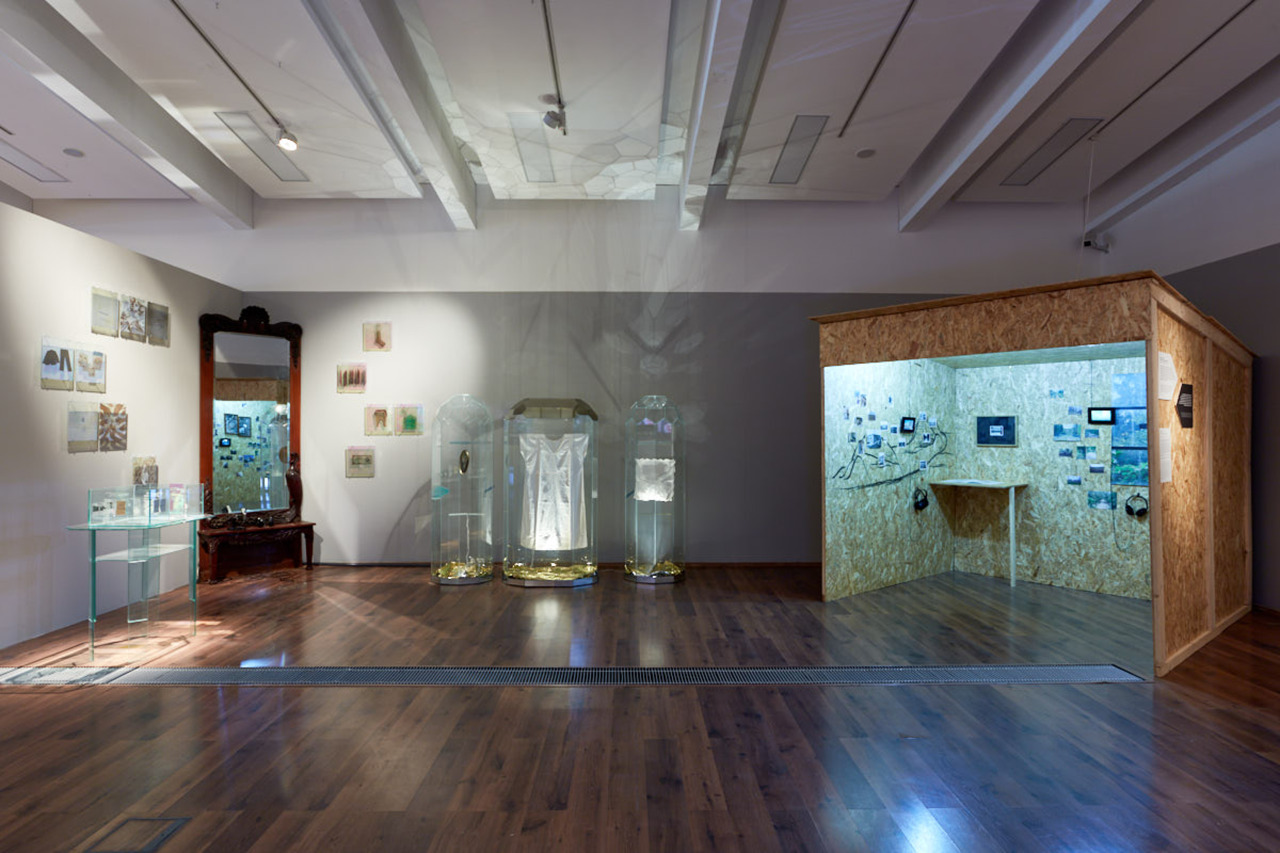
Exhibition view, photo credit: Biro Dávid
The exhibition runs until November 3, 2019 at MODEM Modern and Contemporary Arts Centre
Artists:
Áfra János, Balogh Viktória, Esterházy Marcell, Kocsi Olga, Kemény Lili, Kolos Ádám, Maria Lima Victor, Nagy Csilla, Nemes Csaba, Németh Ilona, Oravecz Imre, Puklus Péter, Schuller Judit Flóra, Sallai László és Szabó Benedek, Szász Lilla, Turi Tímea & Závada Péter.
The workshop was led by: Pettendi Szabó Péter | Participants: Boros Dorina, Éliás Tamás, Dr. Fegyveres Mária, Gellén József, Hofgárt Károly, Horog Máté, Dr. Keszeg Anna, Kun Ágnes Laura Experts: K. Horváth Zsolt, Ragó Anett
The block of domestic violence was designed by:
Balla Csönge
Professional partner:
DMJV Család-és Gyermekjóléti Központja








